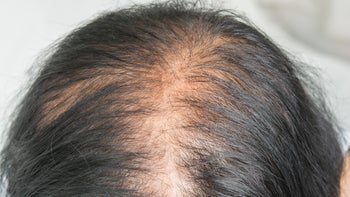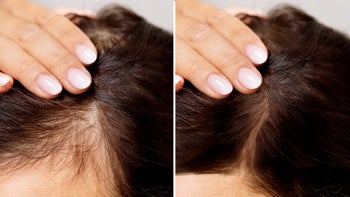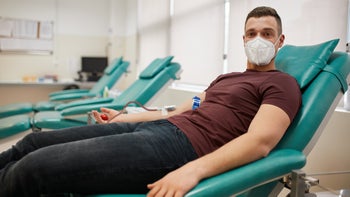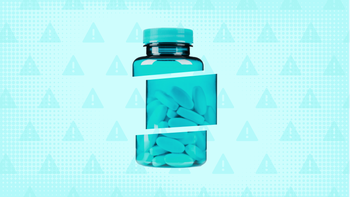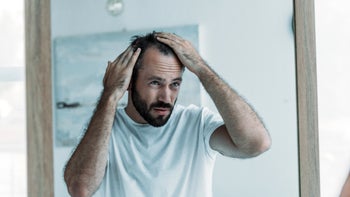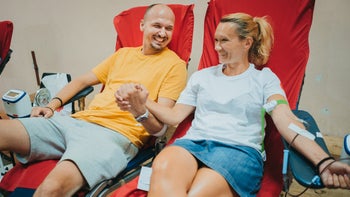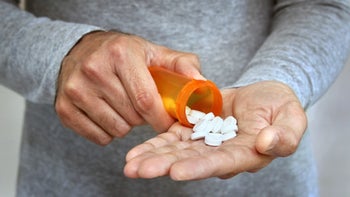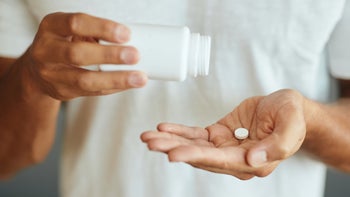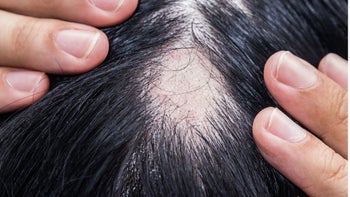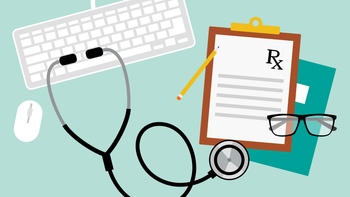
Is It OK to Mix Finasteride and Alcohol?
Key takeaways:
Finasteride treats two medical conditions: benign prostatic hyperplasia (BPH) and a type of hair loss called androgenetic alopecia.
Research shows that finasteride lowers the risk of prostate cancer. Some research suggests alcohol prevents finasteride from having this positive effect
The research is unclear on whether alcohol itself worsens BPH symptoms and hair loss. But, alcohol can have negative effects on both mental and physical health.

As we get older, new health issues can arise and leave you wondering how to deal with them. Hair loss and difficulty peeing are just two issues that many people experience as they get older.
About 50% of men develop benign prostatic hyperplasia (BPH) after turning 50. BPH happens when changes to the prostate gland cause urinary symptoms. And it becomes more common with age. After turning 80 years old, about 90% of men develop BPH.
Many people also experience hair thinning or hair loss as they get older. But issues with hair don’t just happen in men or older adults. Up to 50% of people experience a genetic type of hair loss — androgenetic alopecia — after puberty.
You might be surprised to learn one medication can treat both these conditions. Finasteride (Proscar, Propecia) is a medication option for BPH and androgenetic alopecia. But, like most medications, finasteride has the potential to interact with other medications and substances. This includes alcohol. Since over 50% of adults in the U.S. report drinking alcohol in the past month, it’s important to know whether you can safely drink alcohol while taking your medications. Read on to learn about alcohol’s effects on finasteride, and how drinking alcohol can affect your finasteride prescription.
What is finasteride used for?
Finasteride is FDA-approved to treat BPH and androgenetic alopecia in men. It’s part of a group of medications called 5-alpha reductase inhibitors.
There are two types of finasteride products. Proscar is approved to treat BPH while Propecia is approved to treat male pattern hair loss. But it can also be used off-label to treat hair loss in women.
How does finasteride work for BPH?
Finasteride can help improve symptoms of BPH in people with an enlarged prostate. To understand how finasteride works, we need to understand why BPH happens.
BPH is a medical condition that affects the prostate gland. The prostate is an important organ in the male reproductive system. It’s responsible for making the liquid part of semen, which is an important player in the process of becoming pregnant.
BPH occurs when the prostate gland changes over time. BPH doesn’t always cause the prostate to get bigger, but it can. This can cause bothersome symptoms, including straining to pee, peeing frequently throughout the day, or a weak urine stream.
The American Urological Association recommends 5-alpha reductase inhibitors, like finasteride, to help improve symptoms of BPH in people with an enlarged prostate. By preventing the prostate from getting bigger, finasteride can help relieve urinary symptoms. Finasteride blocks the action of 5-alpha reductase, an enzyme (protein) that converts testosterone into dihydrotestosterone (DHT). This lowers the amount of DHT in the body, which is known to promote prostate growth.
How does it work for androgenetic alopecia?
Finasteride can also be used to treat some types of hair loss. But hair loss can have many different causes, and finasteride doesn’t work in every situation.
Androgenetic (or androgenic) alopecia is the most common type of hair loss. It can affect both men and women. Both genetic and environmental factors play a role in causing this type of hair loss, but an imbalance of hormones is involved. Specifically, too much DHT can make hair thinner and cause it not to grow as long. Finasteride works to treat androgenetic alopecia in men by lowering the amount of DHT in the body.
Make sure to talk to your healthcare provider first if you have hair loss. They can help you decide what the best treatment option is.
What happens if I drink alcohol while taking finasteride?
Currently, there’s no research to say whether alcohol directly impacts finasteride’s ability to treat BPH or hair loss. But some research suggests that alcohol may prevent finasteride from lowering prostate cancer risk.
Finasteride is known to help lower the risk of prostate cancer. But a large study found that finasteride didn’t lower the risk of prostate cancer in men who drank large amounts of alcohol. The researchers aren’t sure why this occurred, but it might be that alcohol makes finasteride less effective.
Though some research suggests that people who take finasteride may have less of a desire to drink alcohol. A small research study of 63 men found that less alcohol was consumed after starting finasteride. Researchers believe that finasteride may lower the desire to drink alcohol by blocking the production of neurosteroids. These are a group of natural steroids that affect brain function, including the desire for alcohol.
Does alcohol make BPH more likely or worsen symptoms?
It’s unclear whether alcohol worsens or helps with BPH symptoms. Some research shows people who drink alcohol may not be as likely to develop BPH. Some research also shows improved urinary symptoms in men with BPH who drink alcohol (except the urge to pee at night).
But the evidence is mixed on whether moderate amounts of alcohol improve urinary symptoms. A large study of over 120,000 men showed that alcohol consumption raised the risk of urinary symptoms (but lowered the risk of BPH). Other research shows no link between alcohol use and urinary symptoms.
Even though the evidence on the link between alcohol and urinary symptoms is mixed, drinking alcohol has many negative health effects on your body. This can lead to both physical and mental health conditions.
Does alcohol make hair loss more likely?
There’s not enough solid evidence to know. Studies on whether alcohol causes hair loss have mixed results.
One small study of identical twins found that drinking more than four alcoholic drinks may be linked to hair loss. But this study also showed that complete abstinence from alcohol was also linked to hair loss.
Other studies found no link between alcohol use and androgenetic alopecia, including one study of over 500 men and another of about 400 men.
But, excessive alcohol use and alcohol use disorder puts you at higher risk for nutrient deficiency. This may include important nutrients, such as folic acid and zinc. Both nutrients play a role in hair growth and repair, so deficiencies may contribute to hair loss. However, we still need more research to be sure.
If you or someone you know struggles with substance use, help is available. Call SAMHSA’s National Helpline at 1-800-662-HELP (4357) to learn about resources in your area.
What are the side effects of finasteride?
People may experience side effects while taking finasteride. Some are common, while others are rare but more severe.
Common side effects
The most common side effects of both Propecia and Proscar include:
Lower sex drive than normal
Problems with ejaculation
Other side effects may include dizziness, breast swelling, and breast tenderness.
Serious side effects
Taking finasteride can cause serious complications. In rare cases, some of the serious side effects include:
Birth defects. Pregnant women shouldn’t take finasteride. This is because finasteride can cause birth defects in male babies. For this reason, people taking finasteride should also wait at least 1 month after stopping finasteride before donating blood.
High grade prostate cancer. One study showed a link between finasteride and a greater risk for a more severe form (high-grade) of prostate cancer. But, the results of this study were re-evaluated and the link between finasteride and high-grade prostate cancer may not actually be a concern.
People taking finasteride may also experience symptoms that affect their quality of life. Make sure to contact your healthcare provider if you experience any of the following:
Lower urinary flow. Let your healthcare provider know if you notice a reduced urine volume. This may be a sign of obstructive uropathy (a condition in which the urine flow is blocked).
Sexual dysfunction. People taking finasteride may develop severe sexual side effects including erectile dysfunction, lower libido, or less pleasure with orgasm.
Negative mood changes. People experiencing sexual dysfunction may be at risk for developing depression and anxiety.
The bottom line
Finasteride is a medication used to treat BPH and a certain type of hair loss called androgenetic alopecia. It’s unclear if drinking alcohol affects how finasteride works, but taking finasteride might make you less likely to drink alcohol.
Research suggests that modest amounts of alcohol may make you less likely to develop BPH, but the research is less clear about the effects of alcohol on urinary symptoms. Alcohol’s effects on hair loss is also unclear. But drinking too much alcohol may prevent the absorption of nutrients needed for hair growth.
If you’re interested in taking finasteride for BPH or hair loss, talk to your healthcare provider about the risks of drinking alcohol during finasteride treatment.
Why trust our experts?



References
Ali, A. K., et al. (2015). Persistent sexual dysfunction and suicidal ideation in young men treated with low-dose finasteride: A pharmacovigilance study. Pharmacotherapy.
Almohanna, H. M., et al. (2019). The role of vitamins and minerals in hair loss: A review. Dermatology and Therapy.
American Academy of Dermatology Association. (n.d.). Hair loss: Who gets and causes.
American Red Cross Biomedical Services. (n.d.). Medication deferral list.
Aphena Pharma Solutions. (2022). Finasteride [package insert].
Bradley, C. S., et al. (2017). Evidence for the impact of diet, fluid intake, caffeine, alcohol and tobacco on lower urinary tract symptoms: A systematic review. The Journal of Urology.
Danesh-Shakiba, M., et al. (2020). Androgenetic alopecia: Relationship to anthropometric indices, blood pressure and life-style habits. Clinical, Cosmetic and Investigational Dermatology.
Gatherwright, J., et al. (2013). The contribution of endogenous and exogenous factors to male alopecia: A study of identical twins. Plastic and Reconstructive Surgery.
Gong, Z., et al. (2009). Alcohol consumption, finasteride and prostate cancer risk: results from the Prostate Cancer Prevention Trial. Cancer.
Goodman, P. J., et al. (2019). Long-term effects of finasteride on prostate cancer mortality. The New England Journal of Medicine.
Guo, E. L., et al. (2017). Diet and hair loss: effects of nutrient deficiency and supplement use. Dermatology Practical & Conceptual.
Helms, C. M., et al. (2012). Neurosteroid influences on sensitivity to ethanol. Frontiers in Endocrinology.
Ho, C. H., et al. (2021). Androgenetic alopecia. StatPearls.
Irwig, M. S. (2013). Decreased alcohol consumption among former male users of finasteride with persistent sexual side effects: A preliminary report. Alcoholism: Clinical and Experimental Research.
Kil, M. S., et al. (2013). Analysis of serum zinc and copper concentrations in hair loss. Annals of Dermatology.
Kim, K. S., et al. (2019). Do lifestyle factors affect lower urinary tract symptoms? Results from the Korean Community Health Survey. International Neurourology Journal.
Lerner, L. B., et al. (2021). Management of lower urinary tract symptoms attributed to benign prostatic hyperplasia: AUA Guideline part I, initial work-up and medical management. The Journal of Urology.
MedlinePlus. (2015). Androgenetic alopecia.
MedlinePlus. (2020). Obstructive uropathy.
Mysore, V. (2012). Finasteride and sexual side effects. Indian Dermatology Online Journal.
National Institute of Diabetes and Digestive and Kidney Diseases. (2014). Prostate enlargement (benign prostatic hyperplasia).
National Institute on Alcohol Abuse and Alcoholism. (2022). Alcohol use in the United States.
Noh, J. W., et al. (2020). Association between lower urinary tract symptoms and cigarette smoking or alcohol drinking. Translational Andrology and Urology.
Organon LLC. (2021). Propecia [package insert].
Park, H., et al. (2009). The therapeutic effect and the changed serum zinc level after zinc supplementation in alopecia areata patients who had a low serum zinc level. Annals of Dermatology.
Parsons, J. K., et al. (2009). Alcohol consumption is associated with a decreased risk of benign prostatic hyperplasia. The Journal of Urology.
Salisbury, B. H., et al. (2021). 5 alpha reductase inhibitors. StatPearls.
Salman, K. E., et al. (2017). Frequency, severity and related factors of androgenetic alopecia in dermatology outpatient clinic: Hospital-based cross-sectional study in Turkey. Anais Brasileiros de Dermatologia.
Substance Abuse and Mental Health Services Administration. (2022). SAMHSA’s National Helpline.
Thompson, I. M., et al. (2003). The influence of finasteride on the development of prostate cancer. The New England Journal of Medicine.
Thompson, I. M., et al. (2013). Long-term survival of participants in the prostate cancer prevention trial. The New England Journal of Medicine.
Trüeb, R. M. (2002). Molecular mechanisms of androgenetic alopecia. Experimental Gerontology.
Was this page helpful?
Related Articles
Browse medications
View AllResearch prescriptions and over-the-counter medications from A to Z, compare drug prices, and start saving.





